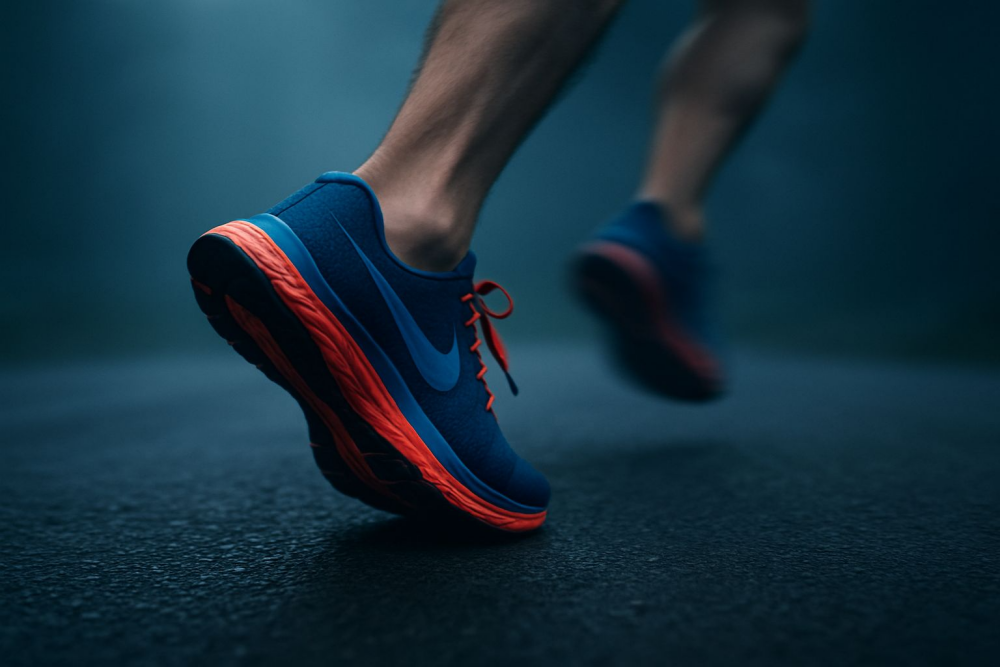
Why Proper Running Form Matters
Good running form isn’t about chasing the perfect look; it’s more about comfort, efficiency, and keeping your body healthy as you start running. Small tweaks in how you run can really help with:
- Reducing aches and pains: When your body moves in a natural way, you’ll feel less soreness and avoid common injuries like shin splints or knee pain.
- Making each run feel easier: Good form helps you conserve energy, so every step is a bit easier, especially on longer runs.
- Helping you run farther: Efficient movement means you’ll be able to extend your time and distance without burning out as quickly.
If you’re just starting out, it’s totally normal to feel awkward or unsure about what running properly actually looks and feels like. The tips below break it all down for you.
How to Nail Your Running Form as a Beginner
I’ve tried a mix of tips throughout my own running adventure, and here are the basics that truly make a difference if you want to improve your form the right way:
- Stand tall: Imagine a straight line from the top of your head down through your neck, back, and hips. Keep your head up and avoid looking at your feet. Instead, pick a spot about 10-20 feet ahead to focus on.
- Relax your shoulders: Let your shoulders drop away from your ears. If you feel any tension, shake out your arms and loosen up. Tension in your shoulders can creep down your back and make running uncomfortable.
- Keep arms at your sides: A comfortable bend, around 90 degrees, works well. Swing your arms naturally from your shoulders and imagine your thumbs lightly brushing your waistband as you swing them with each stride.
- Engage your core: Your ab muscles aren’t just for crunches. A lightly engaged core improves posture and keeps you steady, especially if you get tired.
- Lean slightly forward: A gentle forward lean (from your ankles, not your waist) lets your body naturally roll with momentum. No need to force it, just let gravity help you move ahead.
- Land softly: Try to land lightly on your feet, not with a loud slap. Smooth, “quiet” steps are usually a sign your body is absorbing impact well.
Getting a feel for your natural running motion will help make these form tips automatic over time. If you ever feel stiff or awkward, slow down and revisit the basics.
How Your Feet Should Hit the Ground While Running
Foot-strike, or the way your feet meet the ground, matters for comfort and injury risk. For most runners, aiming to land on the middle of your foot (the “midfoot”) is best. Here’s why:
- Midfoot landing: Most experts agree this style reduces harsh impacts and lets your feet act as shock absorbers. When your foot lands, your heel and ball should touch down about the same time, then roll forward as you push off. This balanced approach helps avoid putting too much stress on any one part of your foot.
- Soft and quick steps: Quick, light steps are usually safer than big, bounding strides. Think of spinning your legs a little faster, aiming for about 160-180 steps per minute; this is called your cadence.
- Avoid hard heel strikes: Landing on your heel with your foot out in front of your body (over-striding) increases impact and can lead to shin splints or knee pain. Try to keep your footfall under your hips so impact is absorbed efficiently.
No need to stress about this at every step. As you run more, your body tends to adapt naturally. Listening for soft, easy landings is a fast way to check if you’re running efficiently.
Common Mistakes Beginners Make, and How to Fix Them
I made just about every running mistake out there when I started. Here are some frequent ones to watch out for, with tips I’ve picked up to get back on track:
- Over-striding: When your foot lands too far ahead of your body, it puts extra force on your joints and tires you out faster. Focus on quick, short steps. Imagine your feet spinning directly beneath you, not reaching out in front.
- Hunching forward: If you’re leaning from the waist instead of the ankles, your breathing feels tougher, and your back gets sore. Remind yourself to stand tall and keep your gaze looking forward, not down.
- Clenched fists or tight arms: If you feel tense, shake your hands out and let your arms swing easily. You want relaxed arms that work with your stride, not against it.
- Skipping warmups or cooldowns: Jumping right into a run or stopping suddenly can make soreness or injuries more likely. Spend a few minutes before and after each run moving gently and stretching any areas that feel tight.
Frequently Asked Questions
Question: How do I correct running form for beginners?
Answer: Start by standing tall with relaxed shoulders and a light forward lean from your ankles. Focus on landing softly with your foot under your body and swinging your arms naturally at your sides. Check your form regularly and make small tweaks; improvement is a process.
Question: How should you start running as a beginner?
Answer: Begin with a combination of running and walking, and focus on building time on your feet rather than distance. Choose comfortable shoes, run a few times per week, and always start with a gentle warmup like brisk walking or a slow jog. Let yourself progress at a steady pace. If you miss a workout, no worries—just get back at it next time.
Question: What is the 10-minute rule for running?
Answer: The 10-minute rule means you take the first 10 minutes of any run as a gentle warmup. The idea is to ease your body into exercise. This helps you avoid injuries and makes the rest of your run smoother. Try combining this with dynamic stretches for even better results.
Question: How should my feet hit the ground when running?
Answer: Aim for a gentle landing with the middle part of your foot. Keep your steps light and quick, avoid striking hard on your heels, and make sure your foot lands underneath your hips, not far out in front. This helps protect your joints and keeps energy use efficient.
Keys to Comfortable Running as a Beginner
Running gets a lot more enjoyable when you feel comfortable and confident. Focusing on simple, effective form tips means fewer injuries, better endurance, and a more rewarding experience out on the roads or trails. I’ve found that the best way to grow as a runner is to listen to your body, be patient, and keep your routine consistent. Every run you take adds a little more skill and strength—with time, you’ll stumble upon what works best for you. Keep experimenting and have fun as you build your own running adventure.
BONUS
If you want to find out and help your body lose the desirable weight faster and more efficiently, then make sure to check these out. They truly help our body perform better during exercise and manage its weight better. Ever heard of them?

Leave a Reply